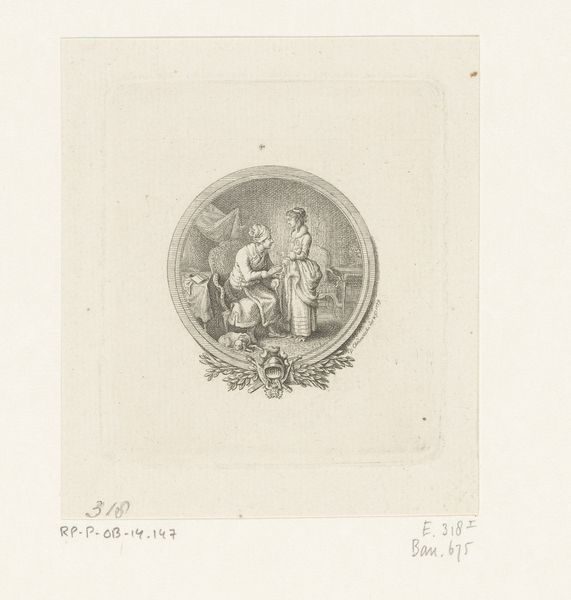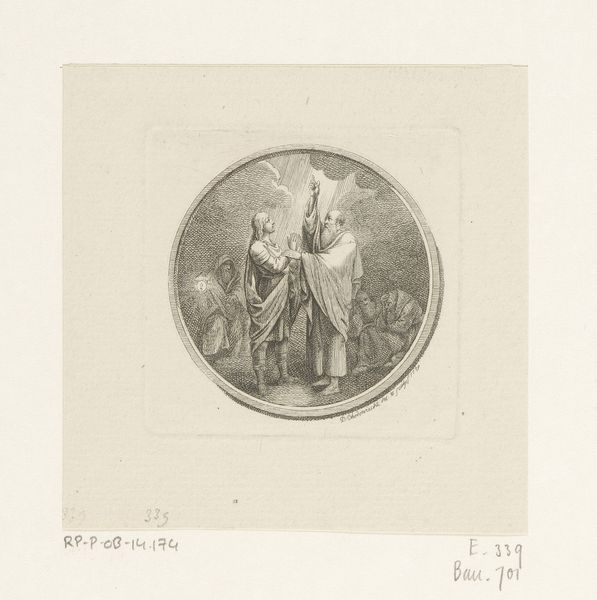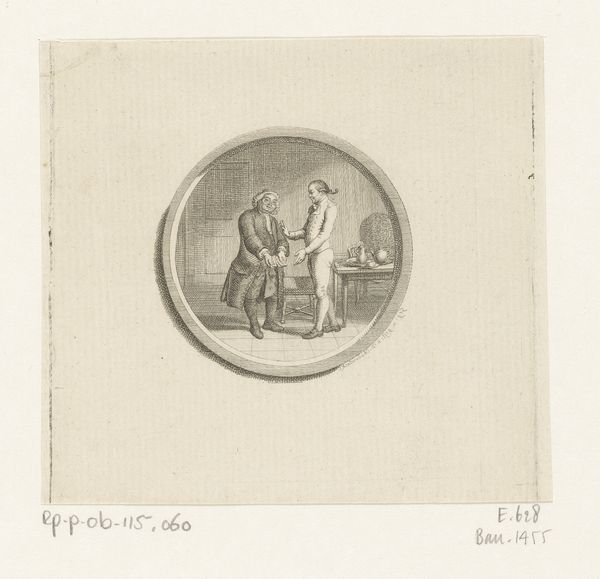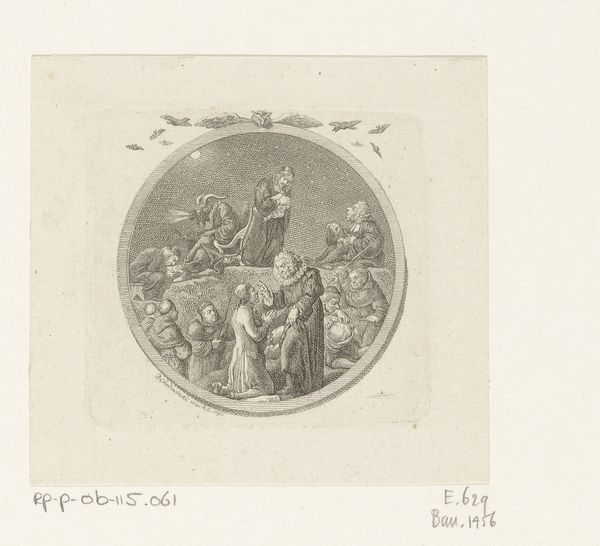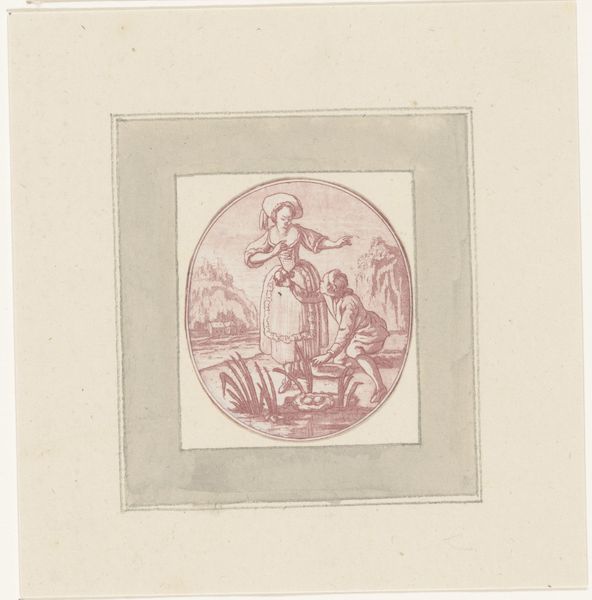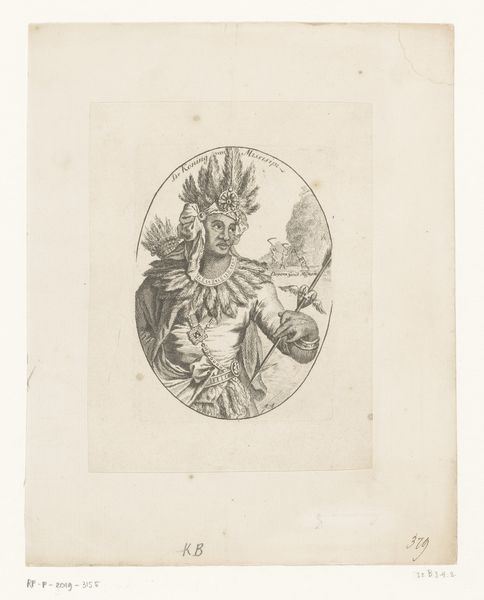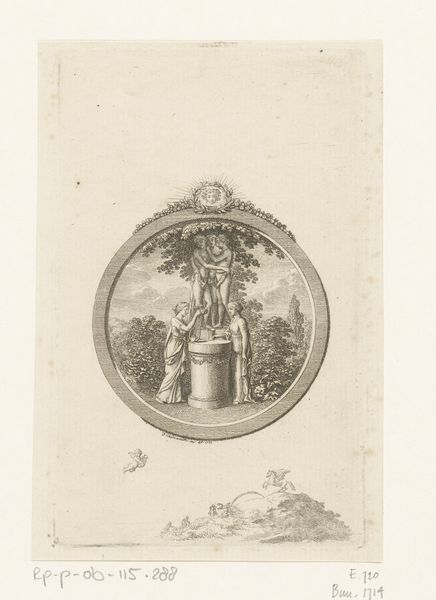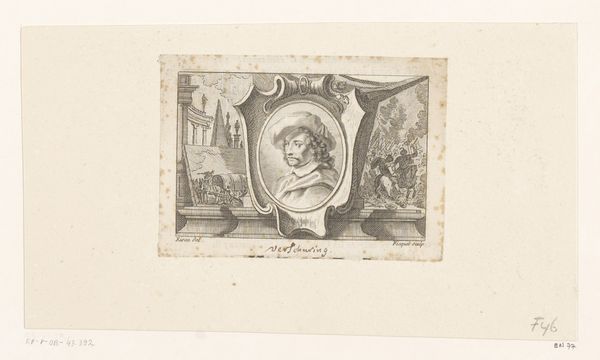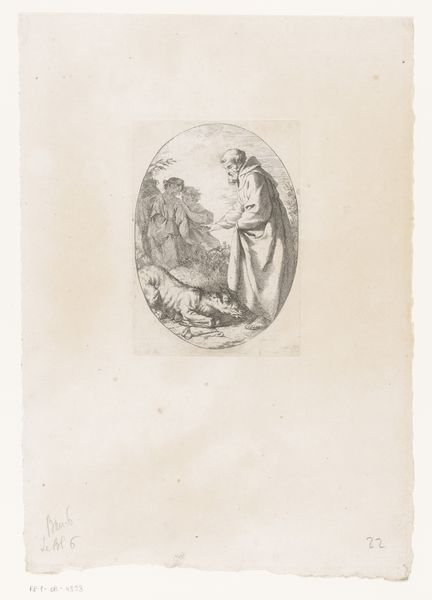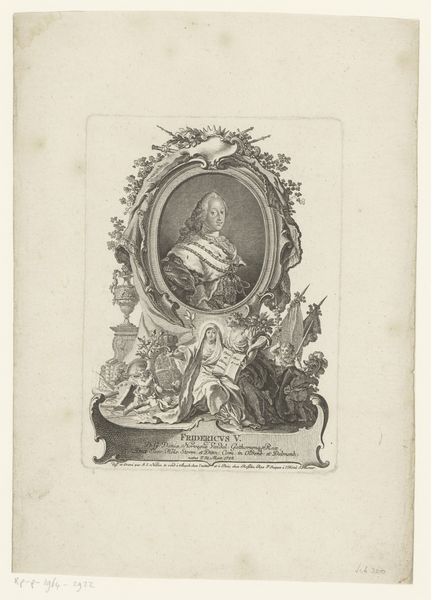
Wilhelm en Lenore rijden galopperend over het kerkhof 1789
0:00
0:00
danielnikolauschodowiecki
Rijksmuseum
drawing, print, etching
#
drawing
#
narrative-art
# print
#
etching
#
old engraving style
#
landscape
#
figuration
#
romanticism
#
horse
#
history-painting
Dimensions: height 89 mm, width 112 mm
Copyright: Rijks Museum: Open Domain
Editor: Here we have Daniel Chodowiecki's "Wilhelm en Lenore rijden galopperend over het kerkhof", an etching from 1789. The scene has such a dark and dramatic feeling! What social commentary can we unpack from this piece? Curator: It’s interesting you use the word "dark," because immediately, I consider the cultural anxiety surrounding death and gender roles prevalent during the late 18th century. Consider the graveyard setting and the frantic flight. How might we interpret this in relation to societal constraints placed on women, particularly within the context of Romanticism? Editor: So you're saying the "darkness" may relate to restrictions imposed upon women? What specific societal constraints do you see reflected? Curator: Think about the patriarchal structures that confined women's choices, often denying them agency in matters of love, marriage, and even their own lives. This print, with its skull and graveyard imagery, seems to visually argue that repressed desires can, figuratively or literally, lead to death. Do you see the hints of revolution present? Editor: That is such a fascinating insight. I hadn’t considered it that way before, focusing more on just the romance of it all. But now that you point it out, there is a kind of rebellion, or escape perhaps, being expressed. It's complex because, death! Curator: Precisely! Chodowiecki seems to question the deadly consequences of these impositions through this narrative. Does this make you consider the ways art challenges dominant social structures? Editor: Absolutely! It reframes my perspective. I initially saw a romanticized flight. Now, I see a critique of societal expectations. Curator: And that’s precisely where art becomes a powerful tool, reflecting and challenging our understanding of the world! Editor: Definitely something to think about next time I see artwork from this era. Thanks for your insights!
Comments
No comments
Be the first to comment and join the conversation on the ultimate creative platform.
